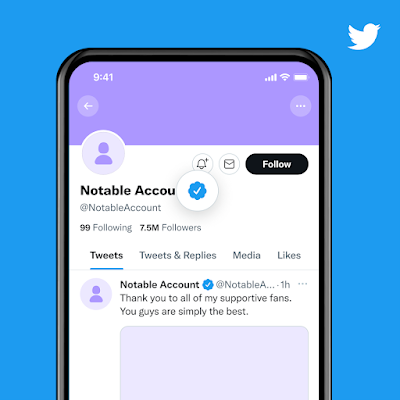Unlocking AI Creativity: Exploring Generative Adversarial Networks (GANs) and Their Revolutionary Applications
Introduction:
Generative Adversarial Networks (GANs) have emerged as one of the most exciting breakthroughs in the field of artificial intelligence (AI). With their unique ability to generate realistic data, GANs have opened up new avenues for creative applications in various domains. In this article, we will delve into the world of GANs, exploring their fundamental principles, working mechanism, and their remarkable impact on AI. Join us on this journey as we uncover the fascinating realm of GANs and their potential to transform the way we perceive and interact with AI.
Table of Contents:
1. The Birth of GANs: An Introduction to Generative Adversarial Networks
2. Understanding the GAN Framework: Two Networks, One Objective
3. The Generator: Unleashing Creativity to Generate Synthetic Data
4. The Discriminator: Distinguishing Real from Synthetic
5. Training GANs: The Battle between Generator and Discriminator
6. Overcoming Challenges: Exploring GAN Variants and Enhancements
7. Applications of GANs: Transforming Multiple Domains
8. GANs in Computer Vision: Creating Realistic Images and Videos
9. GANs in Natural Language Processing: Generating Text and Dialogue
10. The Future of GANs: Unlocking New Frontiers in AI Creativity
1. The Birth of GANs: An Introduction to Generative Adversarial Networks
GANs were first introduced by Ian Goodfellow and his colleagues in 2014 as a novel framework for generating synthetic data. The idea behind GANs is to train two competing neural networks, the generator and the discriminator, to improve each other's performance iteratively.
2. Understanding the GAN Framework: Two Networks, One Objective
In the GAN framework, the generator network takes random noise as input and transforms it into synthetic data that resembles the training data. The discriminator network, on the other hand, aims to distinguish between real and synthetic data. Both networks continuously learn and adapt to each other's outputs, pushing the boundaries of AI creativity.
3. The Generator: Unleashing Creativity to Generate Synthetic Data
The generator network is responsible for transforming random noise into meaningful and realistic synthetic data. It achieves this by learning the underlying patterns and structures present in the training data. The generator's ability to produce convincing outputs is crucial for the success of GANs.
4. The Discriminator: Distinguishing Real from Synthetic
The discriminator network acts as the critic, attempting to differentiate between real and synthetic data. It learns to identify subtle differences and provide feedback to the generator, enabling it to improve its output over time. The discriminator plays a vital role in maintaining the realism of the generated data.
5. Training GANs: The Battle between Generator and Discriminator
Training GANs involves a competitive process where the generator and discriminator continuously improve their performance. This adversarial training involves updating the networks' parameters based on their performance in fooling the discriminator or correctly classifying the data.
6. Overcoming Challenges: Exploring GAN Variants and Enhancements
Over the years, researchers have developed various GAN variants and enhancements to address challenges such as mode collapse and training instability. Techniques like Wasserstein GAN, conditional GAN, and progressive GAN have significantly improved the stability and quality of generated outputs.
7. Applications of GANs: Transforming Multiple Domains
GANs have found applications in numerous domains, including art, fashion, gaming, healthcare, and more. They enable the generation of realistic images, videos, music, and even virtual characters. GANs are revolutionizing the creative process and expanding
8. GANs in Computer Vision: Creating Realistic Images and Videos
In the field of computer vision, GANs have brought forth remarkable advancements. They can generate high-resolution images that are almost indistinguishable from real photographs. GANs have been utilized to enhance image quality, upscale low-resolution images, and even generate entirely new images based on specific styles or concepts. Moreover, GANs have been employed in video synthesis, enabling the generation of realistic videos by extending their image generation capabilities over time.
9. GANs in Natural Language Processing: Generating Text and Dialogue
GANs have also made significant contributions to natural language processing (NLP) tasks. They have been employed in text generation, allowing the creation of coherent and contextually relevant text passages. GANs have been used to generate compelling stories, poetry, and even dialogue systems capable of engaging in realistic conversations. These applications have immense potential in creative writing, chatbots, and content generation.
10. The Future of GANs: Unlocking New Frontiers in AI Creativity
As GANs continue to evolve, their potential for creative applications is boundless. Researchers are actively exploring new avenues such as 3D object generation, style transfer, and cross-domain translation. GANs have the power to revolutionize various industries, including design, entertainment, marketing, and more. Furthermore, ethical considerations surrounding GANs, such as their potential for generating deepfake content, necessitate ongoing research and responsible development.
Conclusion:
Generative Adversarial Networks (GANs) have ushered in a new era of creativity in artificial intelligence. By pitting a generator against a discriminator, GANs have enabled the generation of realistic and diverse synthetic data in various domains. From computer vision to natural language processing, GANs have found applications in creating images, videos, text, and dialogue that rival their real counterparts. With ongoing advancements and future possibilities, GANs hold immense potential to reshape industries, inspire innovation, and redefine the boundaries of AI-generated creativity. Embracing the power of GANs, we are witnessing the emergence of a new paradigm where machines become artists, storytellers, and imaginative collaborators in our journey towards a more imaginative and AI-driven future.



Comments
Post a Comment